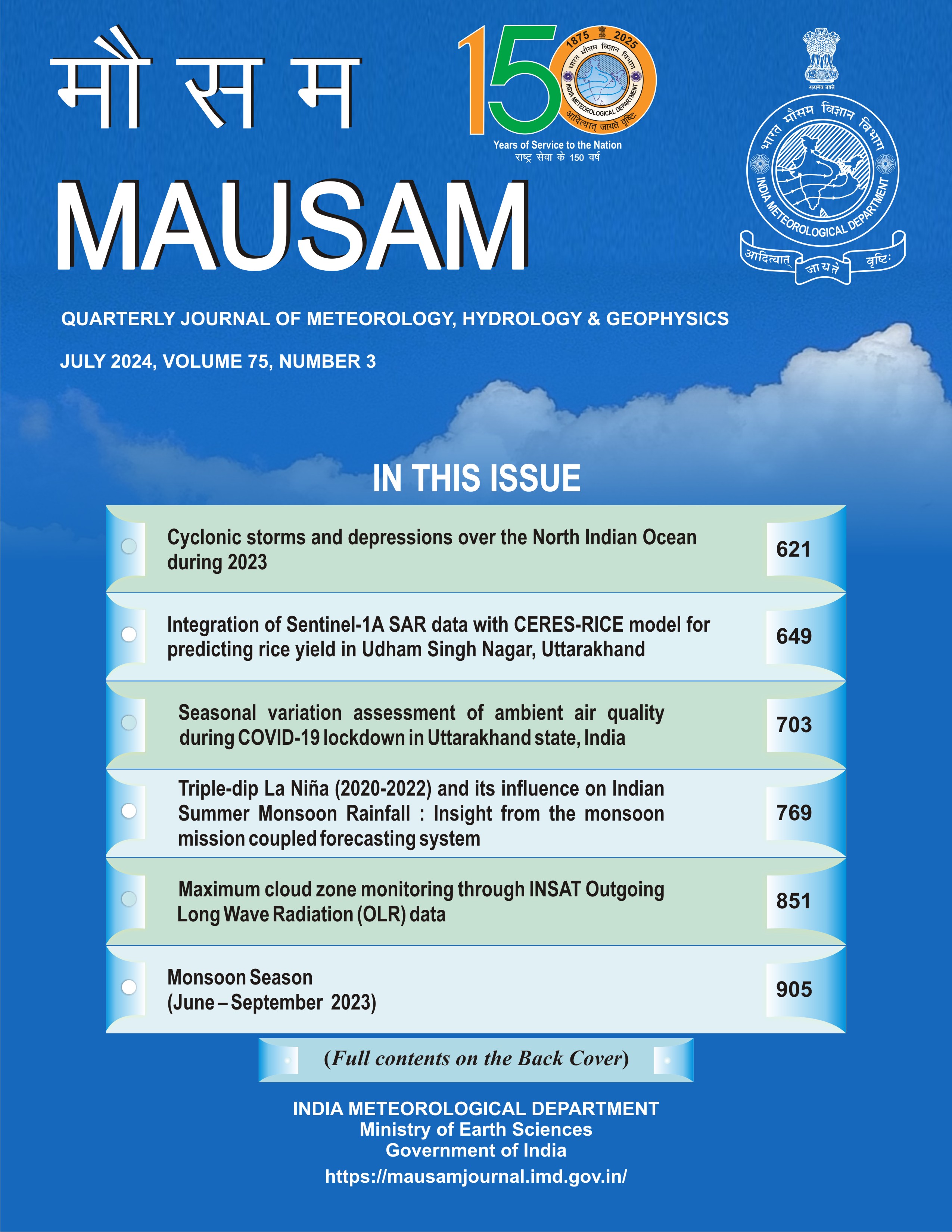A re -assessment study on the onset and withdrawal dates of Indian northeast monsoon for the decade 2011-20
DOI:
https://doi.org/10.54302/mausam.v75i3.6159Abstract
Abstract: The onset and withdrawal dates of Indian North east monsoon (NEM) over the combined region of Coastal Tamil Nadu (CTN) and South coastal Andhra Pradesh (SCAP) for the 10 year period 2011 -20 have been re -determined based on daily rainfall data of 16 stations by following an objective criteria. The dates thus derived when appended with past set of dates fixed by following similar methodology has resulted in a homogenous set of onset and withdrawal dates of NEM for 150 years. The mean onset / withdrawal dates for 2011-20 has been obtained as 23 October and 31 December respectively. During 2011-20, the normal NEM withdrawal from the southern and northern coasts have taken place on 23 December and 5 January respectively. This characteristic of existence of differential withdrawal dates which was shown in an earlier study based on 50 year data of 1961-2010, has persisted in 2011-20 as well.
The superposed epoch analysis conducted on the daily rainfall of the 16 stations has shown very sharp increase of rainfall at the time of onset and decrease after withdrawal. The daily rainfall has increased from 1-5 mm to 10-33 mm at onset and has decreased from 4-16 mm to 0-2 mm at withdrawal. The empirical orthogonal function analysis conducted on the pentad rainfall of October-January rainfall of 4 sub regions SCAP, North, Central and South CTN (NCTN, CCTN and SCTN) has revealed that the first principal component which could be associated with the overall strength of NEM, explains 78.3% of the variation and that the loadings which are positive for all the regions are higher in NCTN and CCTN. The second principal component which explains 12.7 % of variation has positive loadings in SCAP and NCTN and negative loadings in CCTN and SCTN associated with opposite type of rainfall anomalies in the two regions. The empirical orthogonal function analysis manifesting such a pattern could be partly associated with late withdrawal in the south coast compared to north coast.
An analysis of the frequencies of heavy/very heavy /extremely heavy rainfall derived for several periods has revealed that there have been 429 heavy rainfall events over 16 stations and 10 years during October- December. By defining and computing a probability based heavy rainfall index, it has been shown that frequency of heavy rainfall occurrences commencing from onset date is 91 for 16 stations and 10 years, which is 19 time more in the onset phase compared to pre onset phase and that once withdrawal takes place heavy rainfall occurrence becomes very rare.
Downloads
Published
How to Cite
Issue
Section
License
Copyright (c) 2024 MAUSAM

This work is licensed under a Creative Commons Attribution-NonCommercial 4.0 International License.
All articles published by MAUSAM are licensed under the Creative Commons Attribution 4.0 International License. This permits anyone.
Anyone is free:
- To Share - to copy, distribute and transmit the work
- To Remix - to adapt the work.
Under the following conditions:
- Share - copy and redistribute the material in any medium or format
- Adapt - remix, transform, and build upon the material for any purpose, even
commercially.



